Effects of Curing Conditions on Splitting Tensile Behavior and Microstructure of Cemented Aeolian Sand Reinforced with Polypropylene Fiber
Abstract
:1. Introduction
2. Materials and Methods
2.1. Materials
2.2. Test Scheme
2.3. Preparation of the Specimens
2.4. Test Program
3. Results and discussion
3.1. Effects of Curing Temperature on T2 Spectrum Curves
3.2. Effects of Curing Temperature on Pore Size Distribution
3.3. Effects of Curing Temperature on Stress–Strain Curves
3.4. Effects of Curing Temperature on STS
3.5. Effects of Fiber Content on STS
3.6. Relationship between rMPC and STS
3.7. Energy Absorption Capacity
4. Regression Models and Sensitive Analysis
5. Conclusions
- The internal pore radius and pore volume of CSRPF samples increase with curing temperature. The rMPC value of CSRPF samples first decreases and then increases with the fiber content increasing, and the optimum fiber content is 8 ‰.
- The STS of CSRPF samples decreased with increasing curing temperature and increased first and then decreased with increasing fiber content. The results of parameter sensitivity analysis show that curing temperature has a more significant effect on STS of CSRPF.
- Based on the data fitting of the STS test and NMR test, there is an obvious negative correlation between STS and rMPC of CSRPF under high-temperature curing conditions.
Author Contributions
Funding
Institutional Review Board Statement
Informed Consent Statement
Data Availability Statement
Acknowledgments
Conflicts of Interest
References
- Elipe, M.G.M.; Lopez-Querol, S. Aeolian sands: Characterization, options of improvement and possible employment in construction—The State-of-the-art. Constr. Build. Mater. 2014, 73, 728–739. [Google Scholar] [CrossRef]
- Jiang, J.Y.; Feng, T.T.; Chu, H.Y.; Wu, Y.R.; Wang, F.J.; Zhou, W.J.; Wang, Z.F. Quasi-static and dynamic mechanical properties of eco-friendly ultra-high-performance concrete containing aeolian sand. Cem. Concr. Compos. 2019, 97, 369–378. [Google Scholar] [CrossRef]
- Lu, Y.; Yu, W.B.; Hu, D.; Liu, W.B. Experimental study on the thermal conductivity of aeolian sand from the Tibetan Plateau. Cold Reg. Sci. Technol. 2018, 146, 1–8. [Google Scholar] [CrossRef]
- Pakbaz, M.S.; Alipour, R. Influence of cement addition on the geotechnical properties of an Iranian clay. Appl. Clay Sci. 2012, 67–68, 1–4. [Google Scholar] [CrossRef]
- Consoli, N.C.; Foppa, D.; Festugato, L.; Heineck, K.S. Key parameters for strength control of artificially cemented soils. J. Geotech. Geoenviron. 2007, 133, 197–205. [Google Scholar] [CrossRef]
- Kumar, A.; Gupta, D. Behavior of cement-stabilized fiber-reinforced pond ash, rice husk ash-soil mixtures. Geotext. Geomembr. 2016, 44, 466–474. [Google Scholar] [CrossRef]
- Park, S.S. Effect of fiber reinforcement and distribution on unconfined compressive strength of fiber-reinforced cemented sand. Geotext. Geomembr. 2009, 27, 162–166. [Google Scholar] [CrossRef]
- Kutanaei, S.S.; Choobbasti, A.J. Experimental Study of Combined Effects of Fibers and Nanosilica on Mechanical Properties of Cemented Sand. J. Mater. Civ. Eng. 2016, 28, 06016001. [Google Scholar] [CrossRef]
- Ayeldeen, M.; Kitazume, M. Using fiber and liquid polymer to improve the behaviour of cement-stabilized soft clay. Geotext. Geomembr. 2017, 45, 592–602. [Google Scholar] [CrossRef]
- Kutanaei, S.S.; Choobbasti, A.J. Effects of Nanosilica Particles and Randomly Distributed Fibers on the Ultrasonic Pulse Velocity and Mechanical Properties of Cemented Sand. J. Mater. Civ. Eng. 2017, 29, 04016230. [Google Scholar] [CrossRef]
- Choobbasti, A.J.; Kutanaei, S.S. Microstructure characteristics of cement-stabilized sandy soil using nanosilica. J. Rock Mech. Geotech. 2017, 9, 981–988. [Google Scholar] [CrossRef]
- Choobbasti, A.J.; Kutanaei, S.S.; Ghadakpour, M. Shear behavior of fiber-reinforced sand composite. Arab. J. Geosci. 2019, 12, 157. [Google Scholar] [CrossRef]
- Tang, C.S.; Shi, B.; Gao, W.; Chen, F.J.; Cai, Y. Strength and mechanical behavior of short polypropylene fiber reinforced and cement stabilized clayey soil. Geotext. Geomembr. 2007, 25, 194–202. [Google Scholar] [CrossRef]
- Ruan, B.; Zheng, S.; Teng, J.; Ding, H.; Ma, C.; Zhou, J.-W. Analysis on the Triaxial Shear Behavior and Microstructure of Cement-Stabilized Clay Reinforced with Glass Fibers. Adv. Civ. Eng. 2020, 2020, 8842091. [Google Scholar] [CrossRef]
- Sharma, V.; Vinayak, H.K.; Marwaha, B.M. Enhancing compressive strength of soil using natural fibers. Constr. Build. Mater. 2015, 93, 943–949. [Google Scholar] [CrossRef]
- Xiao, H.W.; Liu, Y. A prediction model for the tensile strength of cement-admixed clay with randomly orientated fibres. Eur. J. Env. Civ. Environ. 2018, 22, 1131–1145. [Google Scholar] [CrossRef]
- Bekhiti, M.; Trouzine, H.; Rabehi, M. Influence of waste tire rubber fibers on swelling behavior, unconfined compressive strength and ductility of cement stabilized bentonite clay soil. Constr. Build. Mater. 2019, 208, 304–313. [Google Scholar] [CrossRef]
- Ghadakpour, M.; Choobbasti, A.J.; Kutanaei, S.S. Investigation of the Kenaf fiber hybrid length on the properties of the cement-treated sandy soil. Transp. Geotech. 2020, 22, 100301. [Google Scholar] [CrossRef]
- Park, S.S. Unconfined compressive strength and ductility of fiber-reinforced cemented sand. Constr. Build. Mater. 2011, 25, 1134–1138. [Google Scholar] [CrossRef]
- Chen, X.; Shi, X.Z.; Zhou, J.; Chen, Q.S.; Li, E.M.; Du, X.H. Compressive behavior and microstructural properties of tailings polypropylene fibre-reinforced cemented paste backfill. Constr. Build. Mater. 2018, 190, 211–221. [Google Scholar] [CrossRef]
- Peng, Z.; Qingfu, L.F. Effect of polypropylene fibre on mechanical and shrinkage properties of cement-stabilised macadam. Int. J. Pavement Eng. 2009, 10, 435–445. [Google Scholar] [CrossRef]
- Bao, X.H.; Huang, Y.J.; Jin, Z.Y.; Xiao, X.; Tang, W.C.; Cui, H.Z.; Chen, X.S. Experimental investigation on mechanical properties of clay soil reinforced with carbon fiber. Constr. Build. Mater. 2021, 280, 122517. [Google Scholar] [CrossRef]
- Ates, A. Mechanical properties of sandy soils reinforced with cement and randomly distributed glass fibers (GRC). Compos. Part B-Eng. 2016, 96, 295–304. [Google Scholar] [CrossRef]
- Cao, S.; Yilmaz, E.; Song, W.D. Fiber type effect on strength, toughness and microstructure of early age cemented tailings backfill. Constr. Build. Mater. 2019, 223, 44–54. [Google Scholar] [CrossRef]
- Xue, G.L.; Yilmaz, E.; Song, W.; Yilmaz, E. Influence of fiber reinforcement on mechanical behavior and microstructural properties of cemented tailings backfill. Constr. Build. Mater. 2019, 213, 275–285. [Google Scholar] [CrossRef]
- Lv, X.F.; Yang, X.H.; Zhou, H.Y.; Zhang, S. Mechanical Behavior of Cemented Sand Reinforced with Different Polymer Fibers. Adv. Mater. Sci. Eng. 2019, 2019, 8649619. [Google Scholar] [CrossRef]
- Valipour, M.; Shourijeh, P.T.; Mohammadinia, A. Application of recycled tire polymer fibers and glass fibers for clay reinforcement. Transp. Geotech. 2021, 27, 100474. [Google Scholar] [CrossRef]
- Xue, G.L.; Yilmaz, E.; Feng, G.R.; Cao, S. Bending behavior and failure mode of cemented tailings backfill composites incorporating different fibers for sustainable construction. Constr. Build. Mater. 2021, 289, 123163. [Google Scholar] [CrossRef]
- Zhou, N.; Du, E.B.; Zhang, J.X.; Zhu, C.L.; Zhou, H.Q. Mechanical properties improvement of Sand-Based cemented backfill body by adding glass fibers of different lengths and ratios. Constr. Build. Mater. 2021, 280, 122408. [Google Scholar] [CrossRef]
- Hamidi, A.; Hooresfand, M. Effect of fiber reinforcement on triaxial shear behavior of cement treated sand. Geotext. Geomembr. 2013, 36, 1–9. [Google Scholar] [CrossRef]
- Chen, M.; Shen, S.L.; Arulrajah, A.; Wu, H.N.; Hou, D.W.; Xu, Y.S. Laboratory evaluation on the effectiveness of polypropylene fibers on the strength of fiber-reinforced and cement-stabilized Shanghai soft clay. Geotext. Geomembr. 2015, 43, 515–523. [Google Scholar] [CrossRef]
- Ruan, B.; Ding, H.; Teng, J.; Deng, W.; Zheng, S.; Ruan, C. Mechanical Properties and Microstructure of Polypropylene Fiber Reinforced Cement Mortar Soil. KSCE J. Civ. Eng. 2021, 25, 1985–1997. [Google Scholar] [CrossRef]
- Fall, M.; Celestin, J.C.; Pokharel, M.; Toure, M. A contribution to understanding the effects of curing temperature on the mechanical properties of mine cemented tailings backfill. Eng. Geol. 2010, 114, 397–413. [Google Scholar] [CrossRef]
- Fall, M.; Pokharel, M. Coupled effects of sulphate and temperature on the strength development of cemented tailings backfills: Portland cement-paste backfill. Cem. Concr. Compos. 2010, 32, 819–828. [Google Scholar] [CrossRef]
- Aldhafeeri, Z.; Fall, M.; Pokharel, M.; Pouramini, Z. Temperature dependence of the reactivity of cemented paste backfill. Appl. Geochem. 2016, 72, 10–19. [Google Scholar] [CrossRef]
- Zhang, Z.W.; Qian, J.S. Effect of protogenetic anhydrite on the hydration of cement under different curing temperature. Constr. Build. Mater. 2017, 142, 417–422. [Google Scholar] [CrossRef]
- Li, H.X.; Ni, D.Y.; Liang, G.W.; Guo, Y.C.; Dong, B.Q. Mechanical performance and microstructure of cement paste/mortar modified by VAEC dispersible powder cured under different temperatures. Constr. Build. Mater. 2021, 278, 122446. [Google Scholar] [CrossRef]
- Abd-El Aziz, M.A.; El Aleem, S.A.; Heikal, M. Physico-chemical and mechanical characteristics of pozzolanic cement pastes and mortars hydrated at different curing temperatures. Constr. Build. Mater. 2012, 26, 310–316. [Google Scholar] [CrossRef]
- Sun, J.W.; Zhang, Z.Q.; Hou, G.H. Utilization of fly ash microsphere powder as a mineral admixture of cement: Effects on early hydration and microstructure at different curing temperatures. Powder Technol. 2020, 375, 262–270. [Google Scholar] [CrossRef]
- Ple, O.; Le, T.N.H. Effect of polypropylene fiber-reinforcement on the mechanical behavior of silty clay. Geotext. Geomembr. 2012, 32, 111–116. [Google Scholar] [CrossRef]
- TB 10001-2016; Code for Design of Railway Earth Structure. China Railway Press: Beijing, China, 2017.
- Boz, A.; Sezer, A.; Ozdemir, T.; Hizal, G.E.; Dolmaci, O.A. Mechanical properties of lime-treated clay reinforced with different types of randomly distributed fibers. Arab. J. Geosci. 2018, 11, 122. [Google Scholar] [CrossRef]
- TB 10102-2010; Code for Soil Test of Railway Engineering. China Railway Press: Beijing, China, 2011.
- Lyu, C.H.; Ning, Z.F.; Wang, Q.; Chen, M.Q. Application of NMR T-2 to Pore Size Distribution and Movable Fluid Distribution in Tight Sandstones. Energ. Fuel 2018, 32, 1395–1405. [Google Scholar] [CrossRef]
- Jaeger, F.; Bowe, S.; Van As, H.; Schaumann, G.E. Evaluation of 1H NMR relaxometry for the assessment of pore-size distribution in soil samples. Eur. J. Soil Sci. 2009, 60, 1052–1064. [Google Scholar] [CrossRef]
- Zhao, Y.X.; Sun, Y.F.; Liu, S.M.; Wang, K.; Jiang, Y.D. Pore structure characterization of coal by NMR cryoporometry. Fuel 2017, 190, 359–369. [Google Scholar] [CrossRef]
- Wang, Y.; Yuan, Q.; Deng, D.H.; Ye, T.; Fang, L. Measuring the pore structure of cement asphalt mortar by nuclear magnetic resonance. Constr. Build. Mater. 2017, 137, 450–458. [Google Scholar] [CrossRef]
- Colinart, T.; Glouannec, P. Investigation of drying of building materials by single-sided NMR. Energy Proced. 2015, 78, 1484–1489. [Google Scholar] [CrossRef]
- Zhang, A.; Ge, Y.; Yang, W.C.; Cai, X.P.; Du, Y.B. Comparative study on the effects of nano-SiO2, nano-Fe2O3 and nano-NiO on hydration and microscopic properties of white cement. Constr. Build. Mater. 2019, 228, 116767. [Google Scholar] [CrossRef]
- Muller, A.C.A.; Scrivener, K.L.; Gajewicz, A.M.; McDonald, P.J. Densification of C-S-H Measured by H-1 NMR Relaxometry. J. Phys. Chem. C 2013, 117, 403–412. [Google Scholar] [CrossRef]
- Liu, J.P.; Yang, P.; Li, L.; Zhang, T. Characterizing the pore size distribution of a chloride silt soil during freeze-thaw processes via nuclear magnetic resonance relaxometry. Soil Sci. Soc. Am. J. 2020, 84, 1577–1591. [Google Scholar] [CrossRef]
- Deng, Y.F.; Yue, X.B.; Liu, S.Y.; Chen, Y.G.; Zhang, D.W. Hydraulic conductivity of cement-stabilized marine clay with metakaolin and its correlation with pore size distribution. Eng. Geol. 2015, 193, 146–152. [Google Scholar] [CrossRef]
- Tran, K.Q.; Satomi, T.; Takahashi, H. Improvement of mechanical behavior of cemented soil reinforced with waste cornsilk fibers. Constr. Build. Mater. 2018, 178, 204–210. [Google Scholar] [CrossRef]
- Tran, K.Q.; Satomi, T.; Takahashi, H. Tensile behaviors of natural fiber and cement reinforced soil subjected to direct tensile test. J. Build. Eng. 2019, 24, 100748. [Google Scholar] [CrossRef]
- Gandomi, A.H.; Yun, G.J.; Alavi, A.H. An evolutionary approach for modeling of shear strength of RC deep beams. Mater. Struct. 2013, 46, 2109–2119. [Google Scholar] [CrossRef]
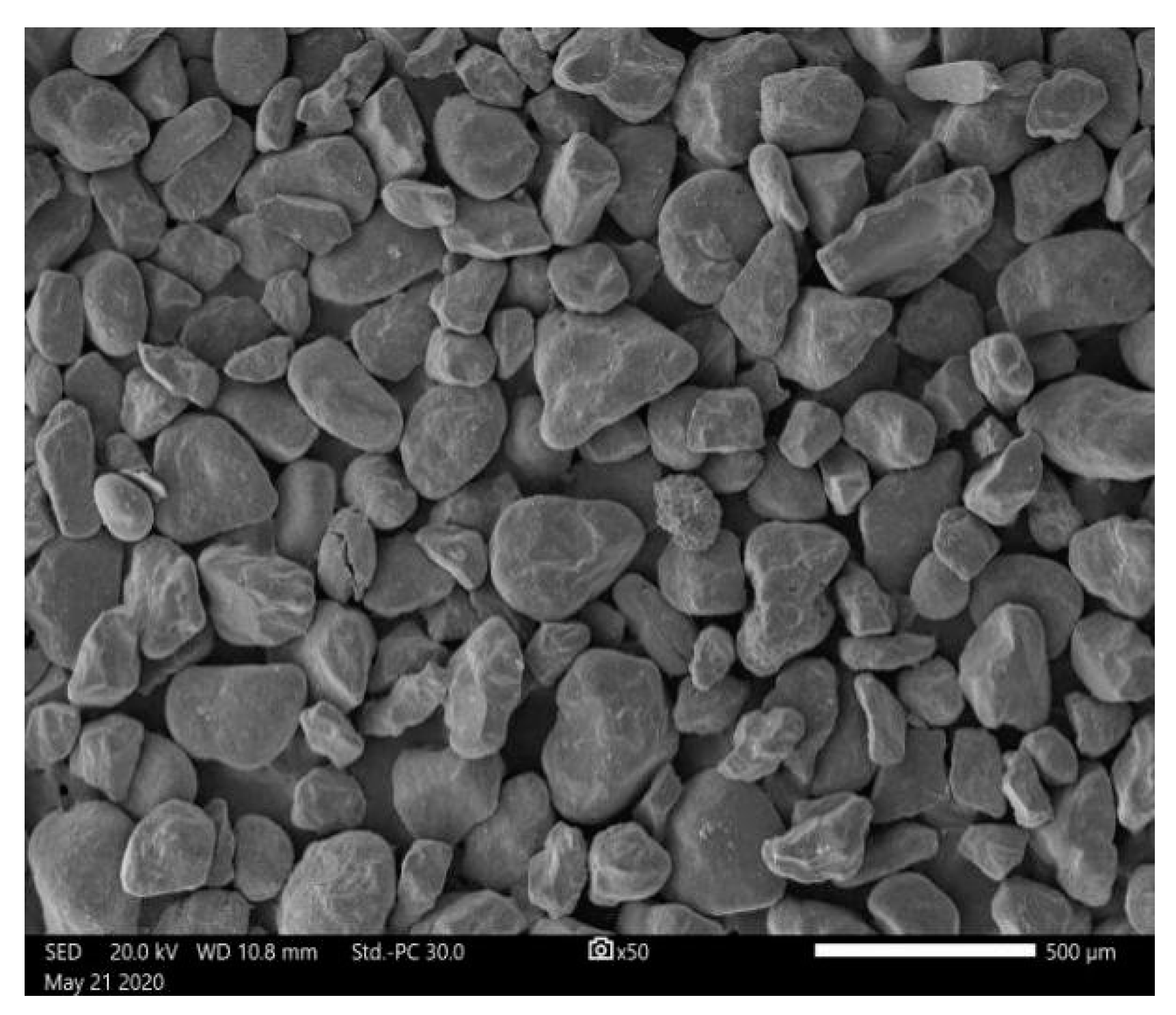
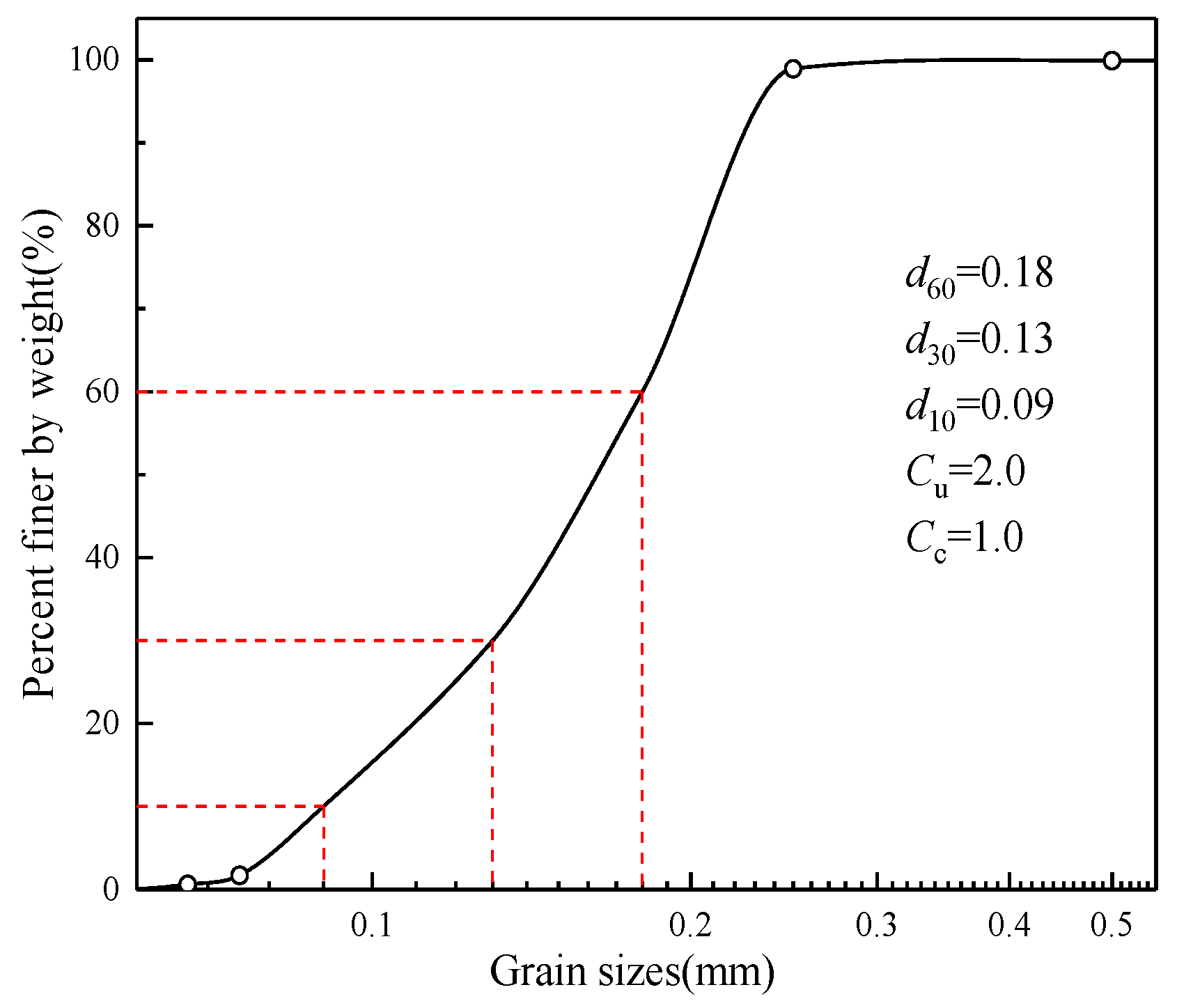

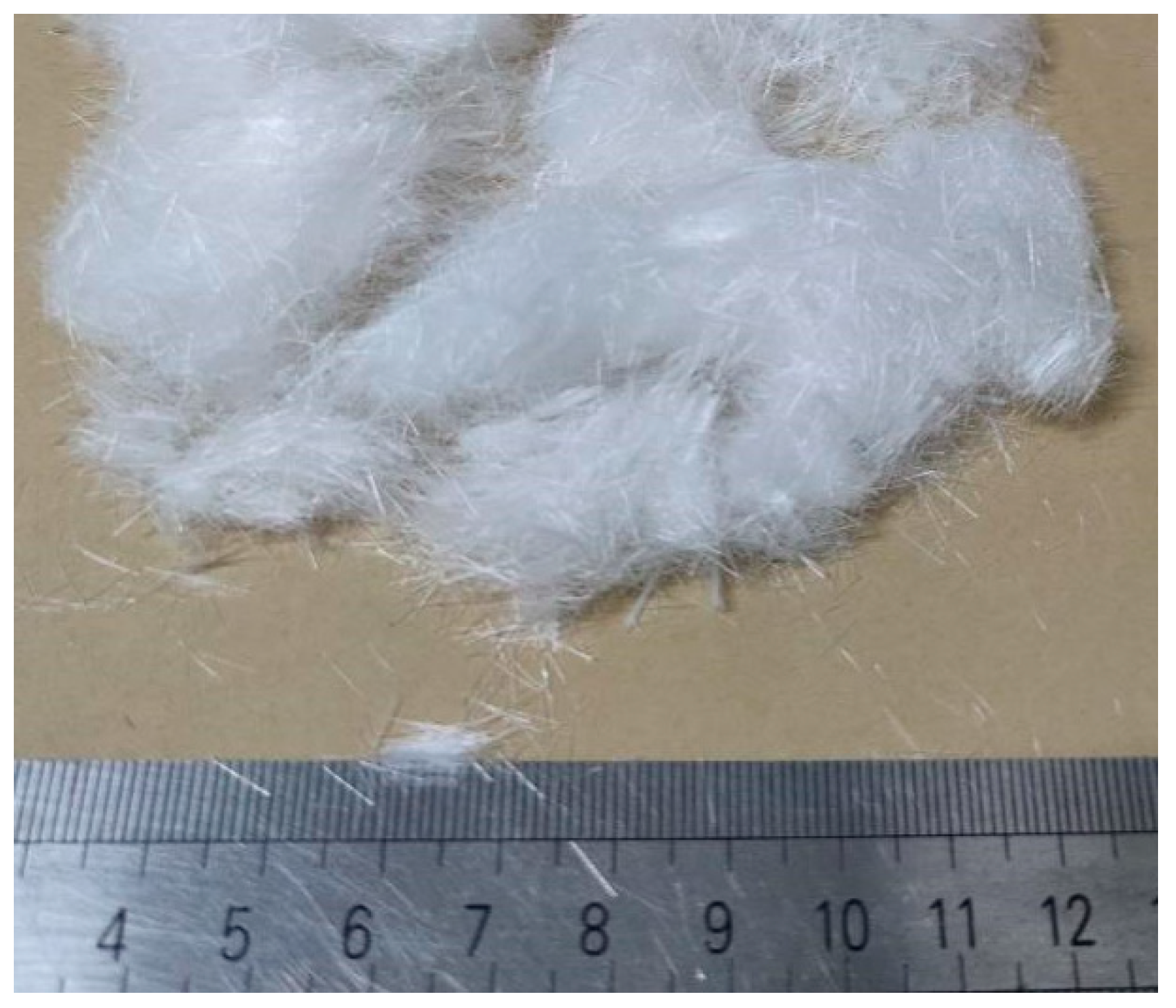
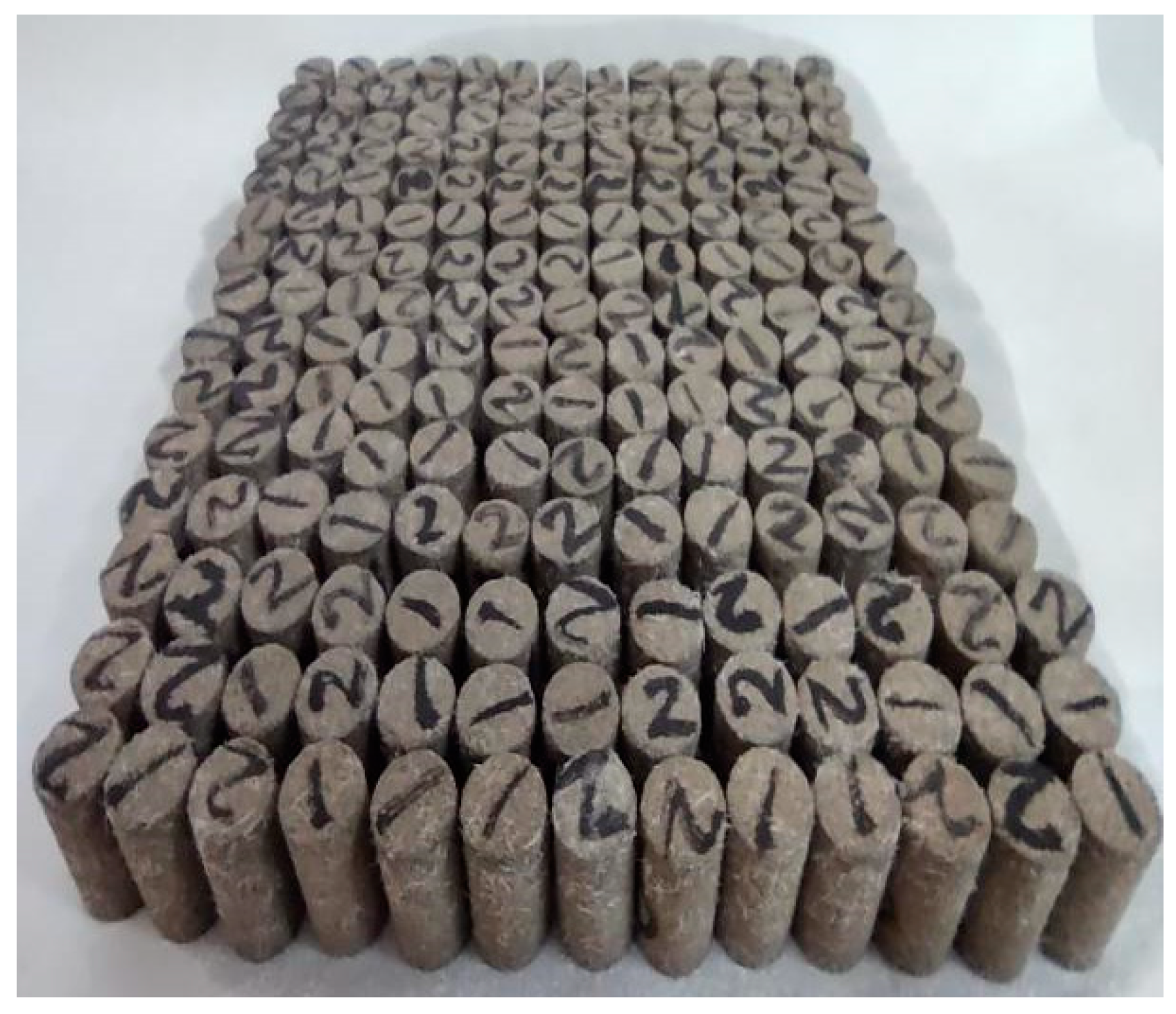
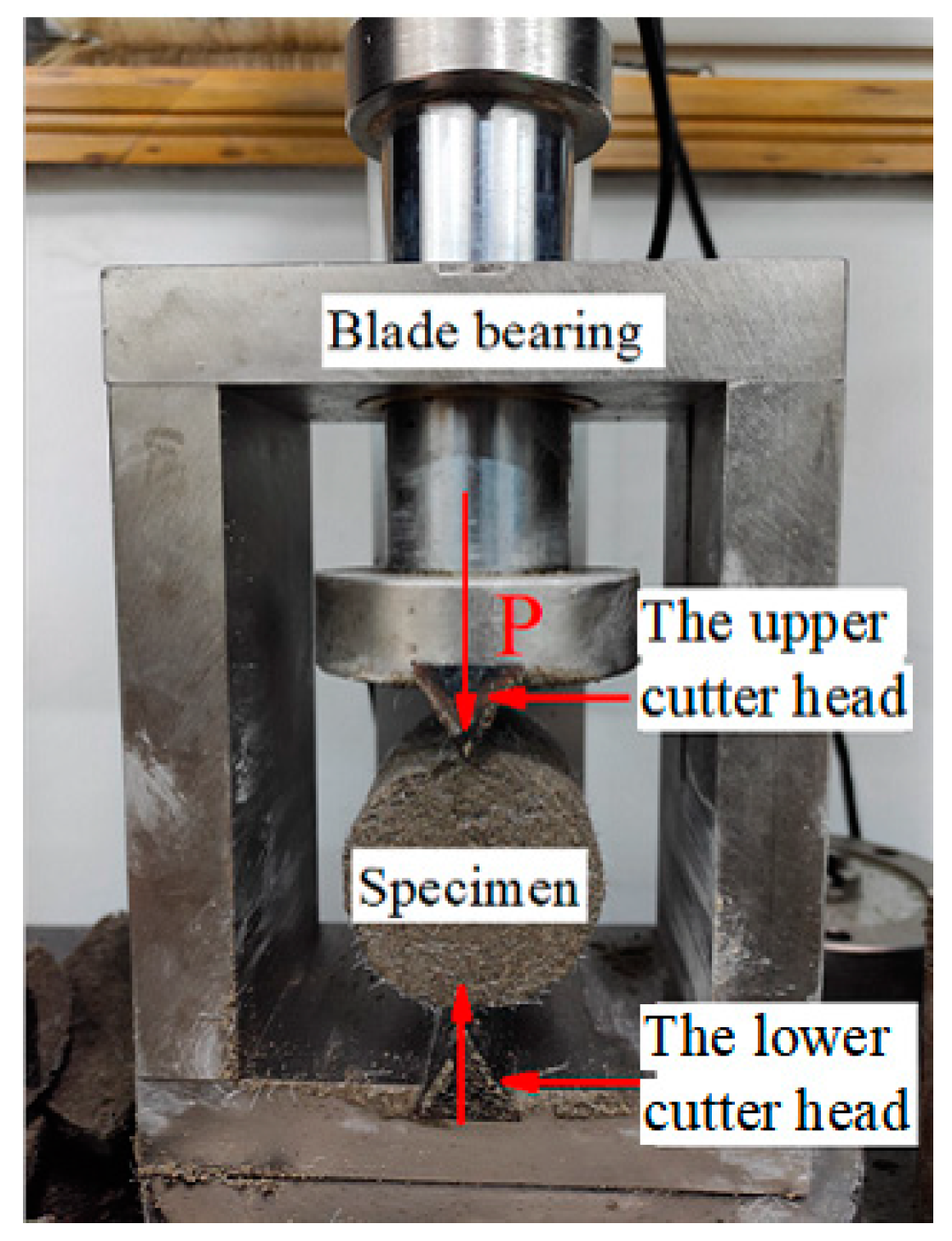
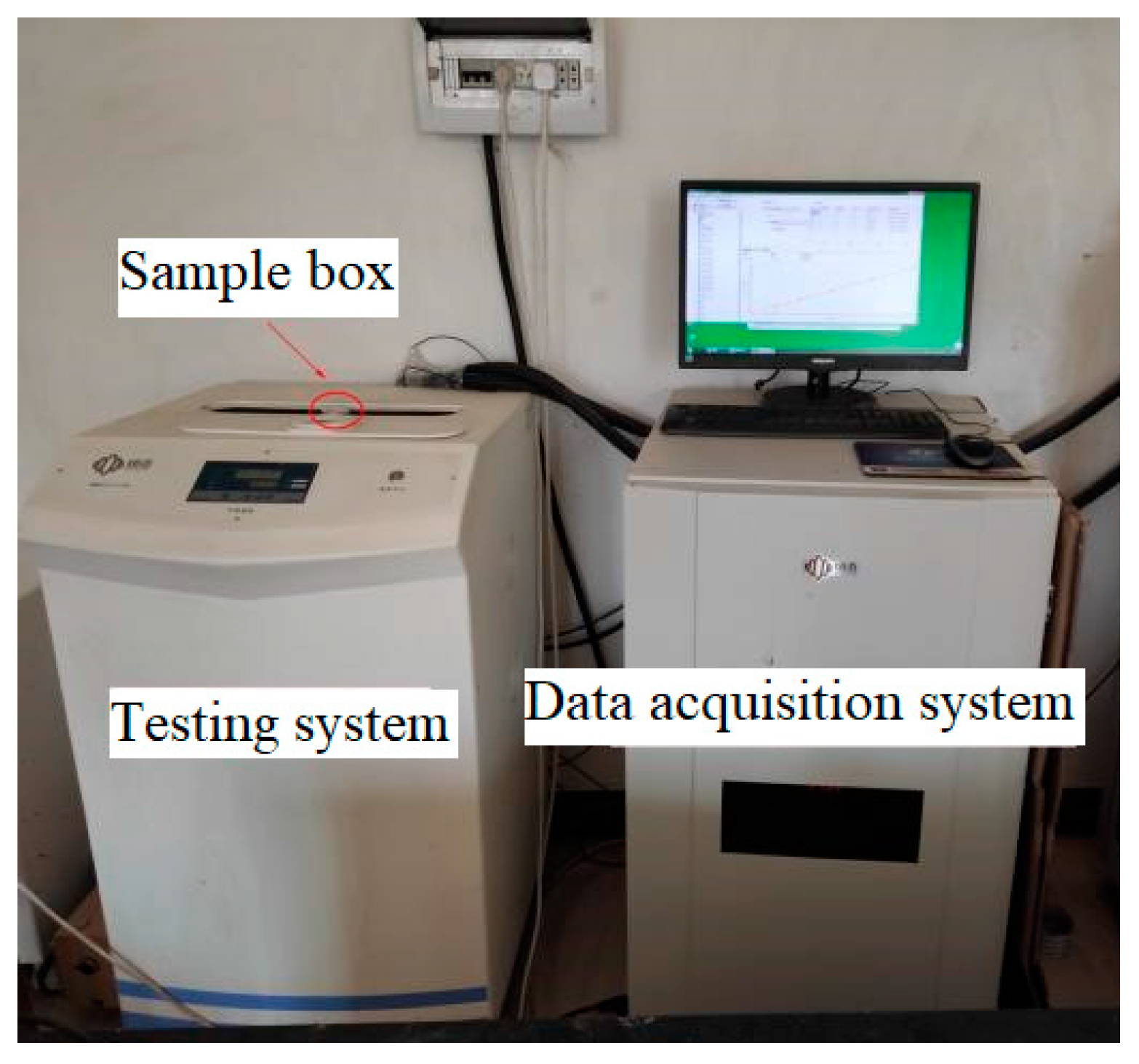
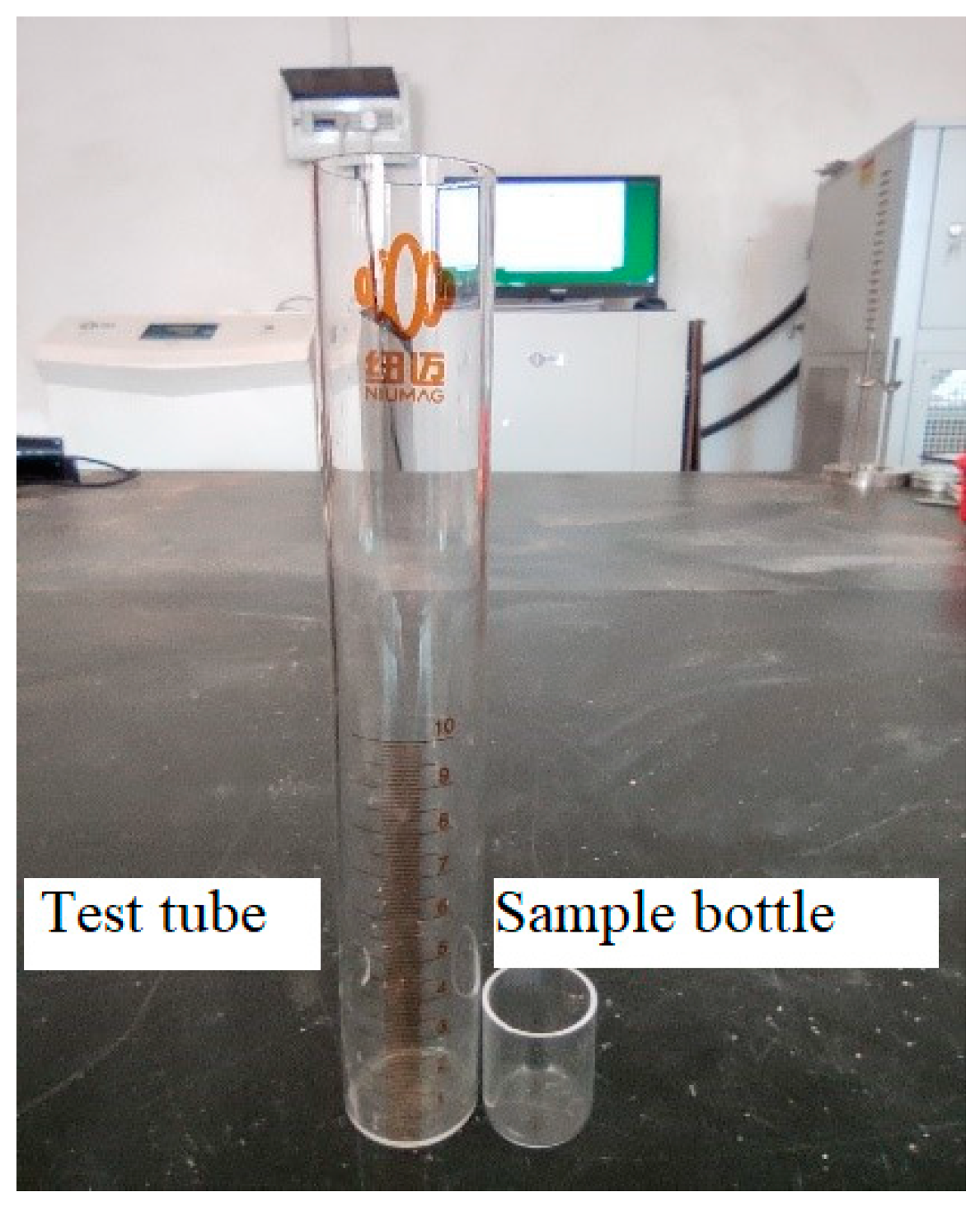
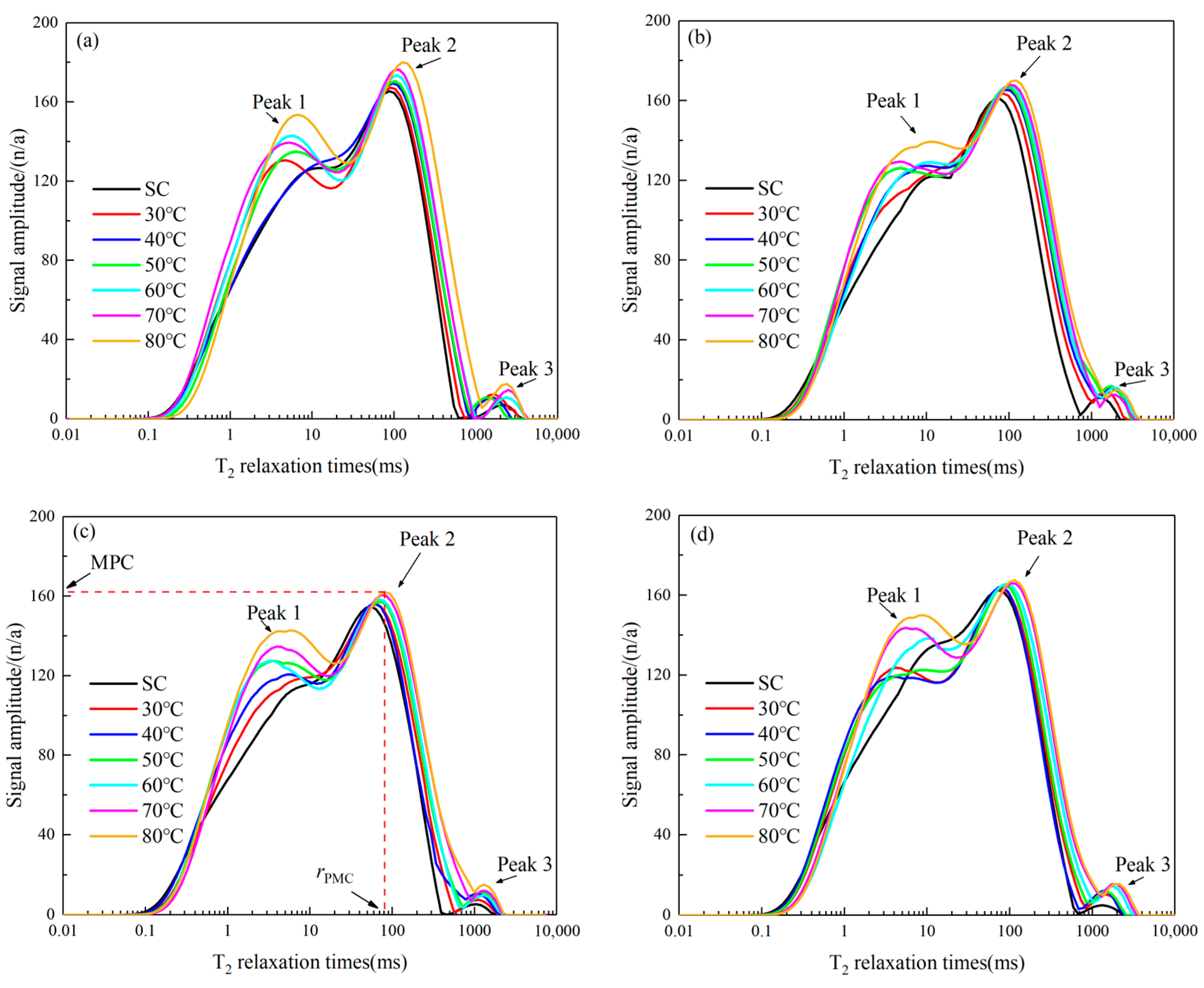
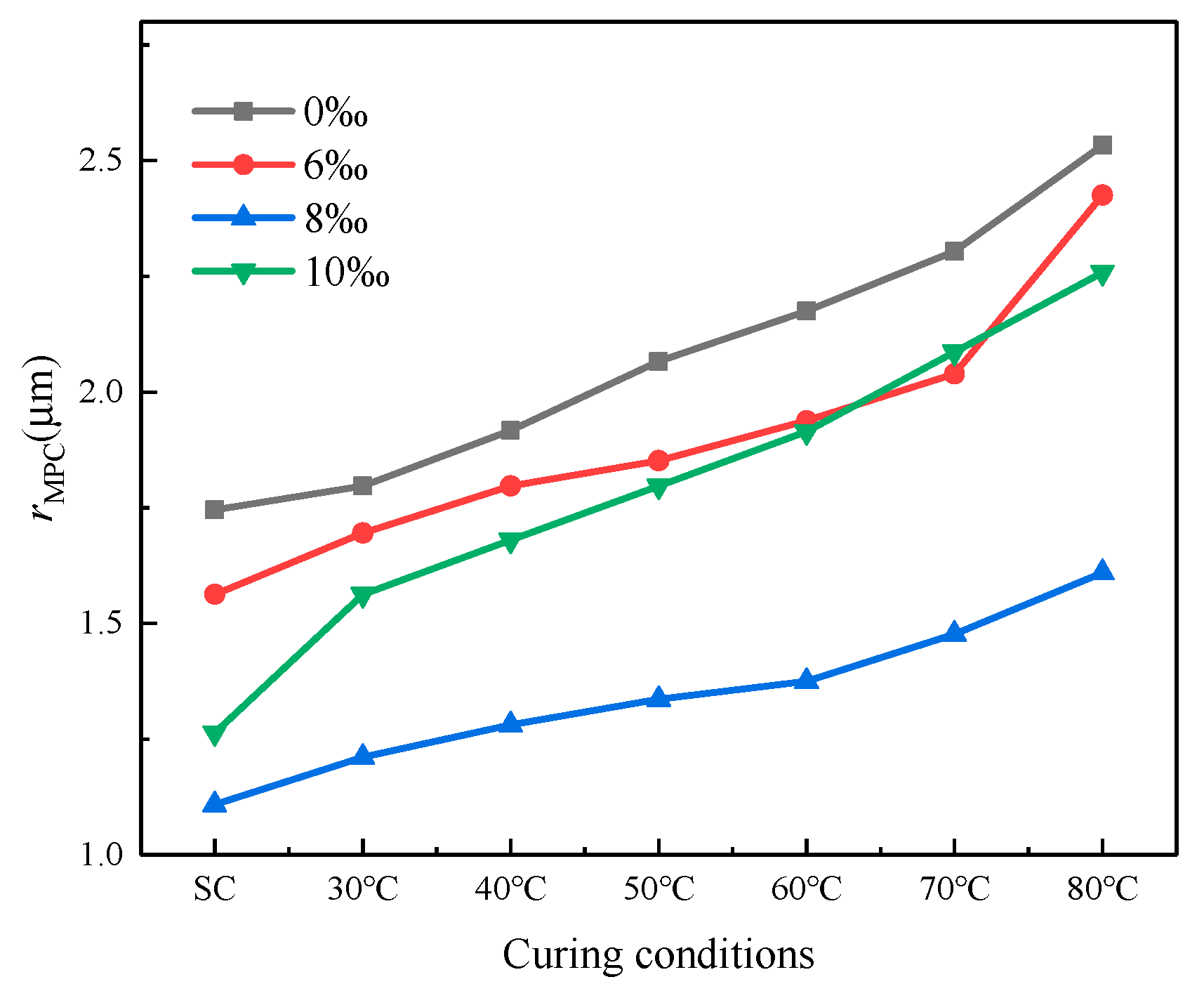
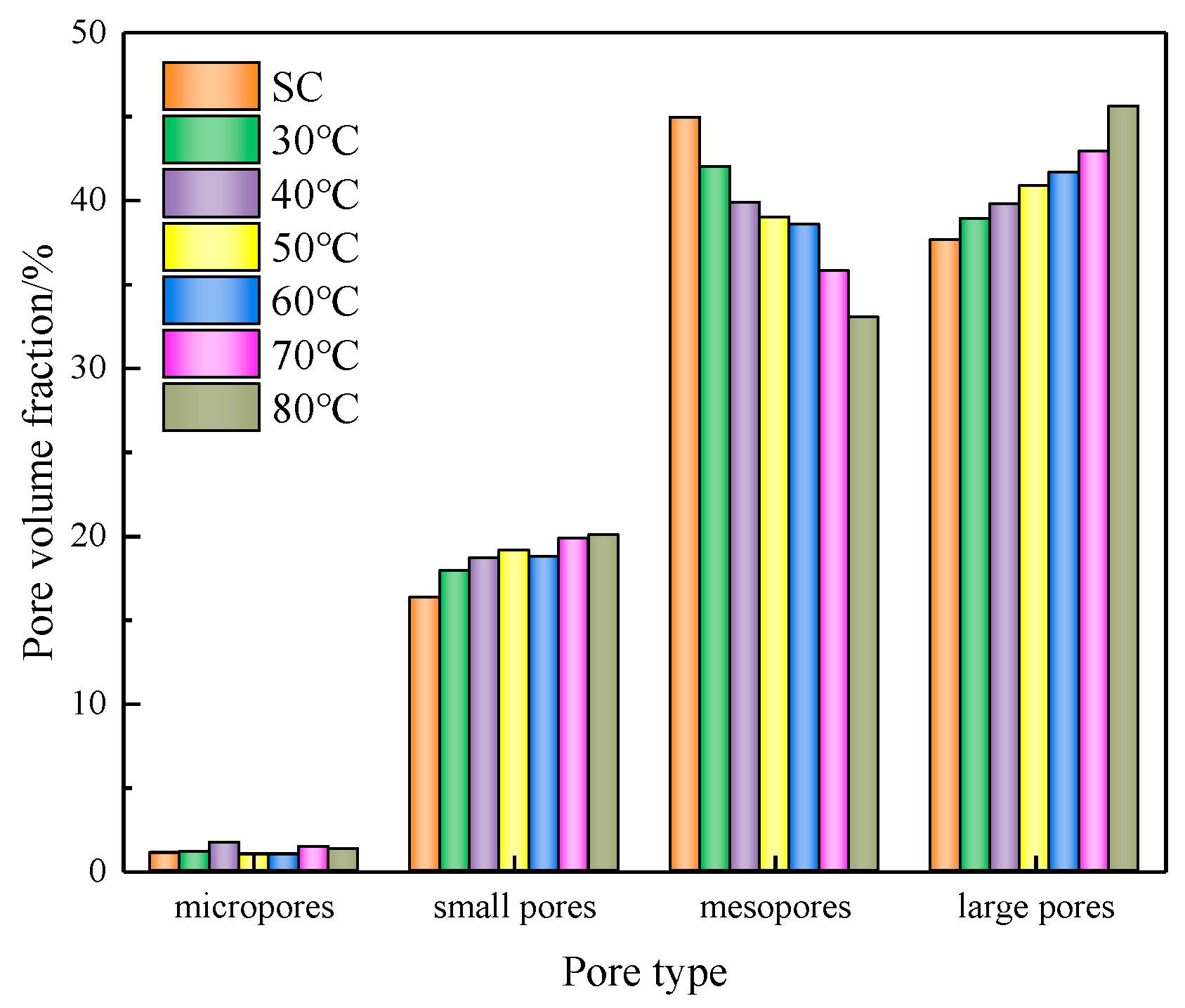
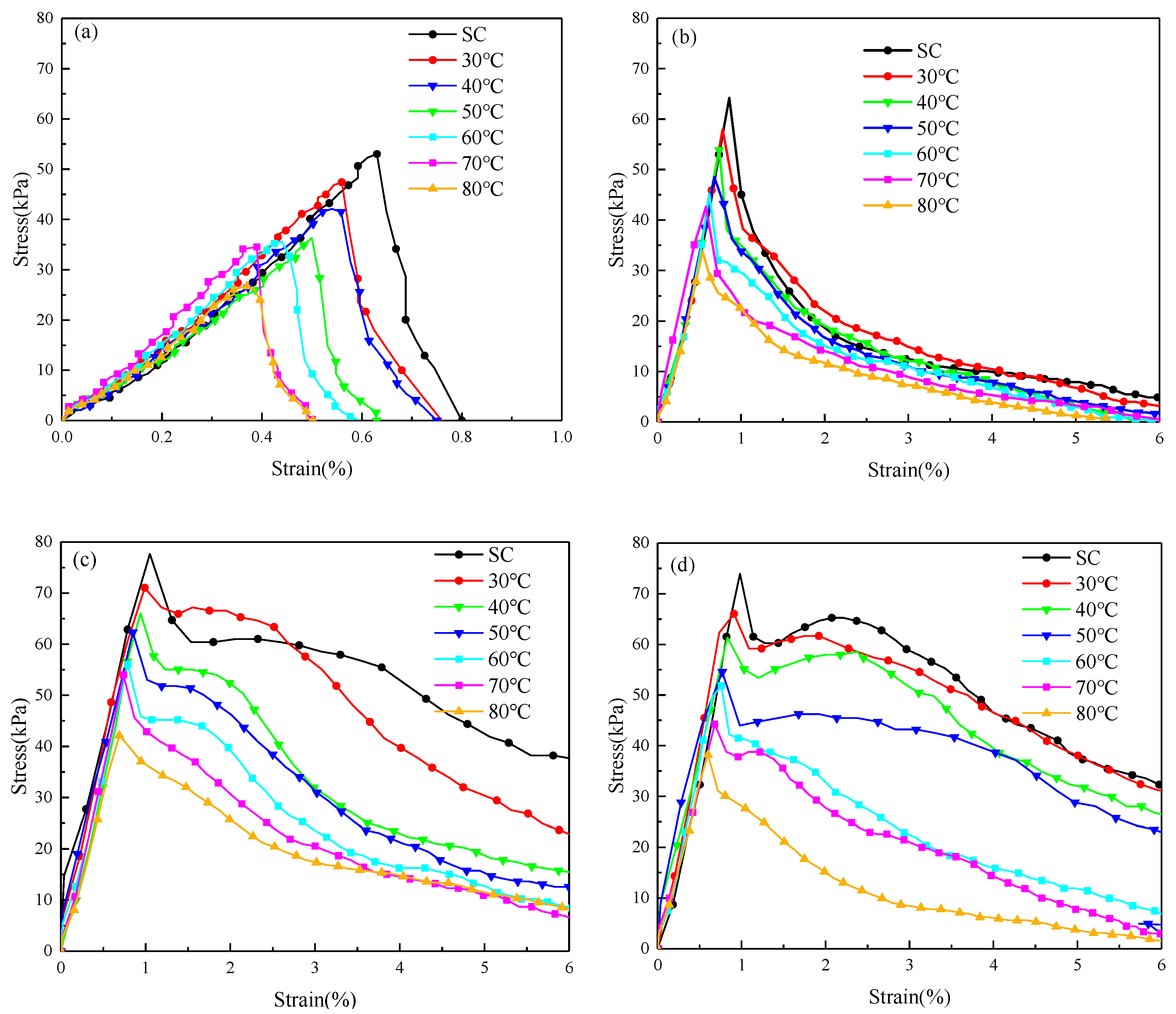

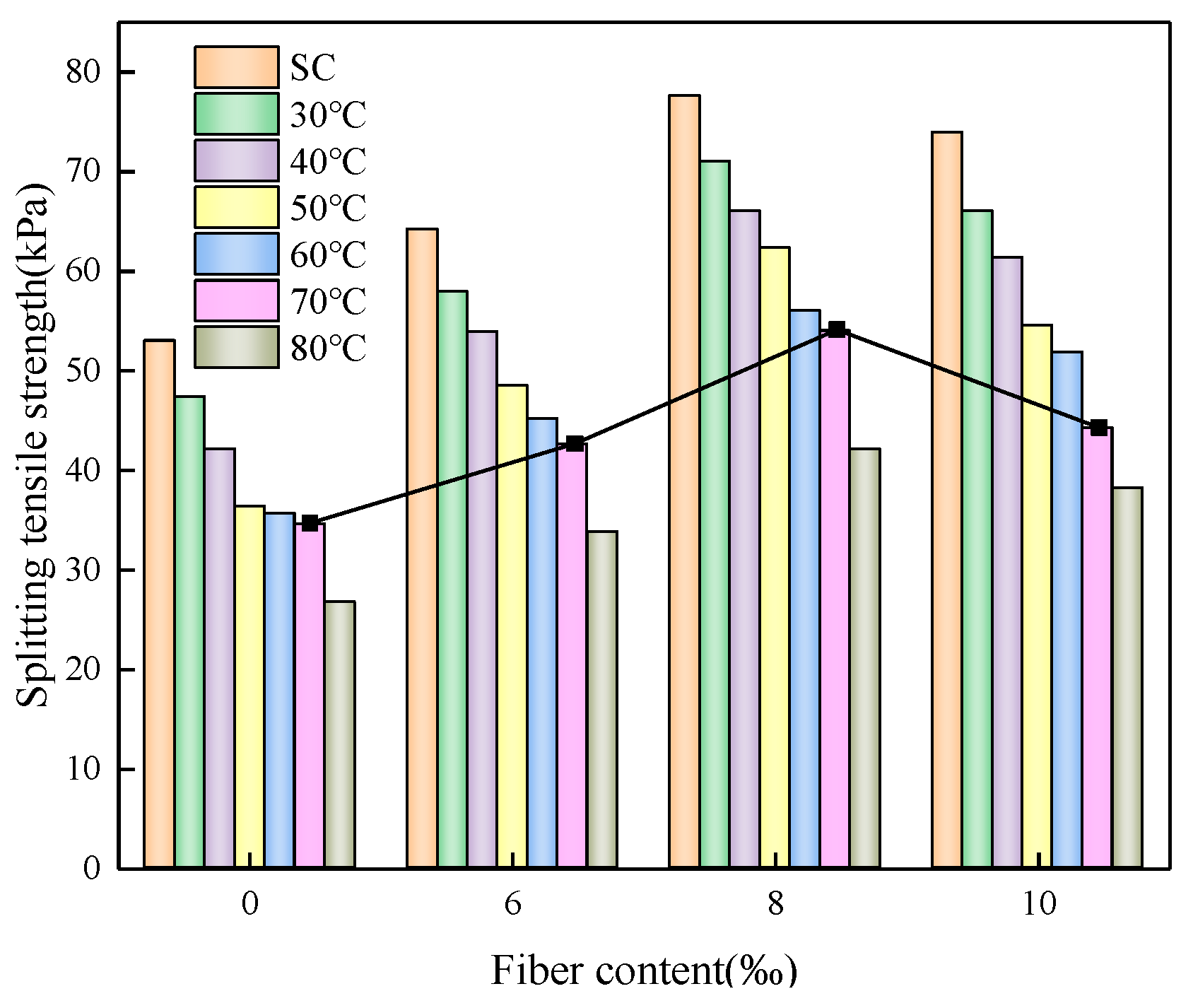
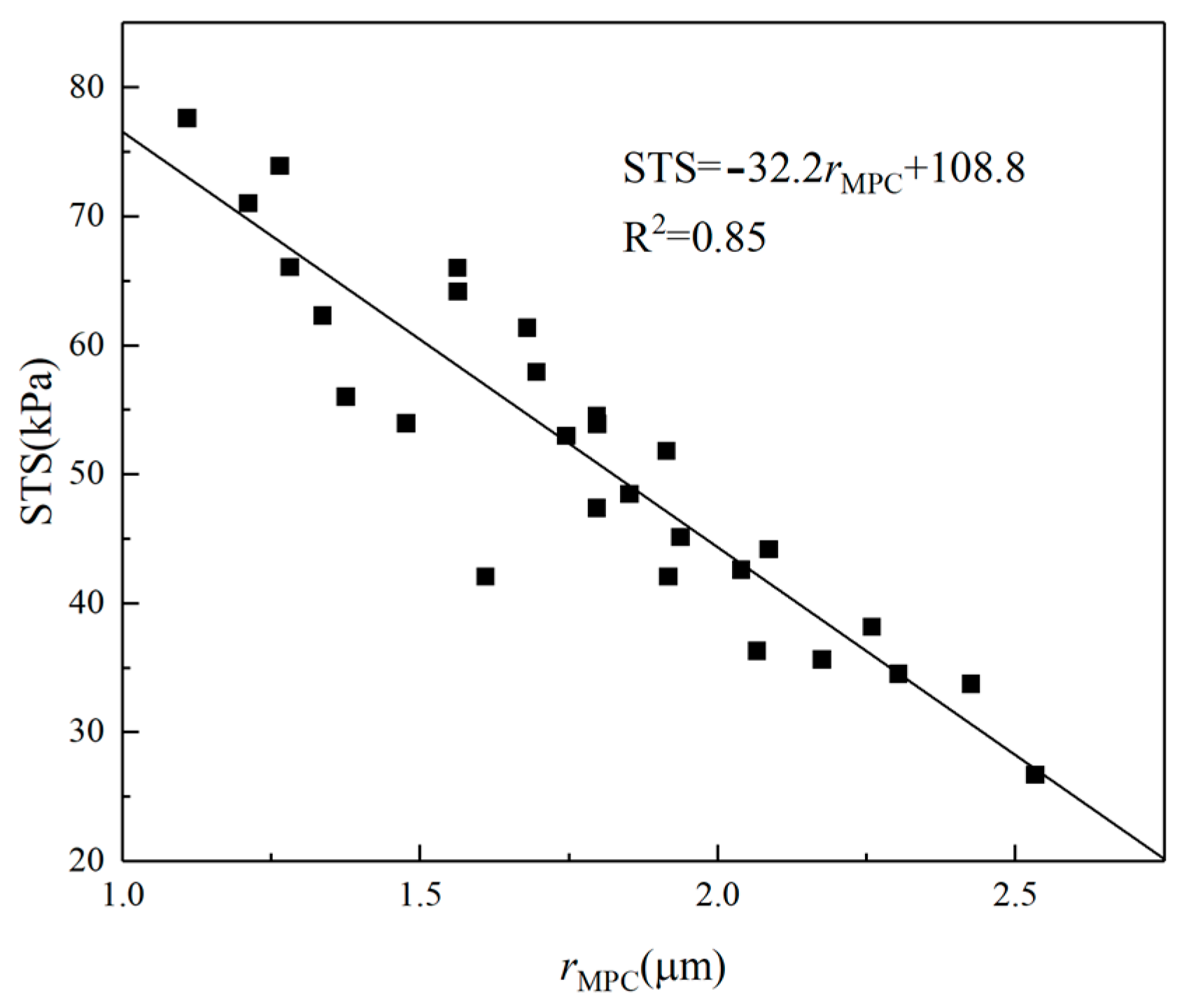
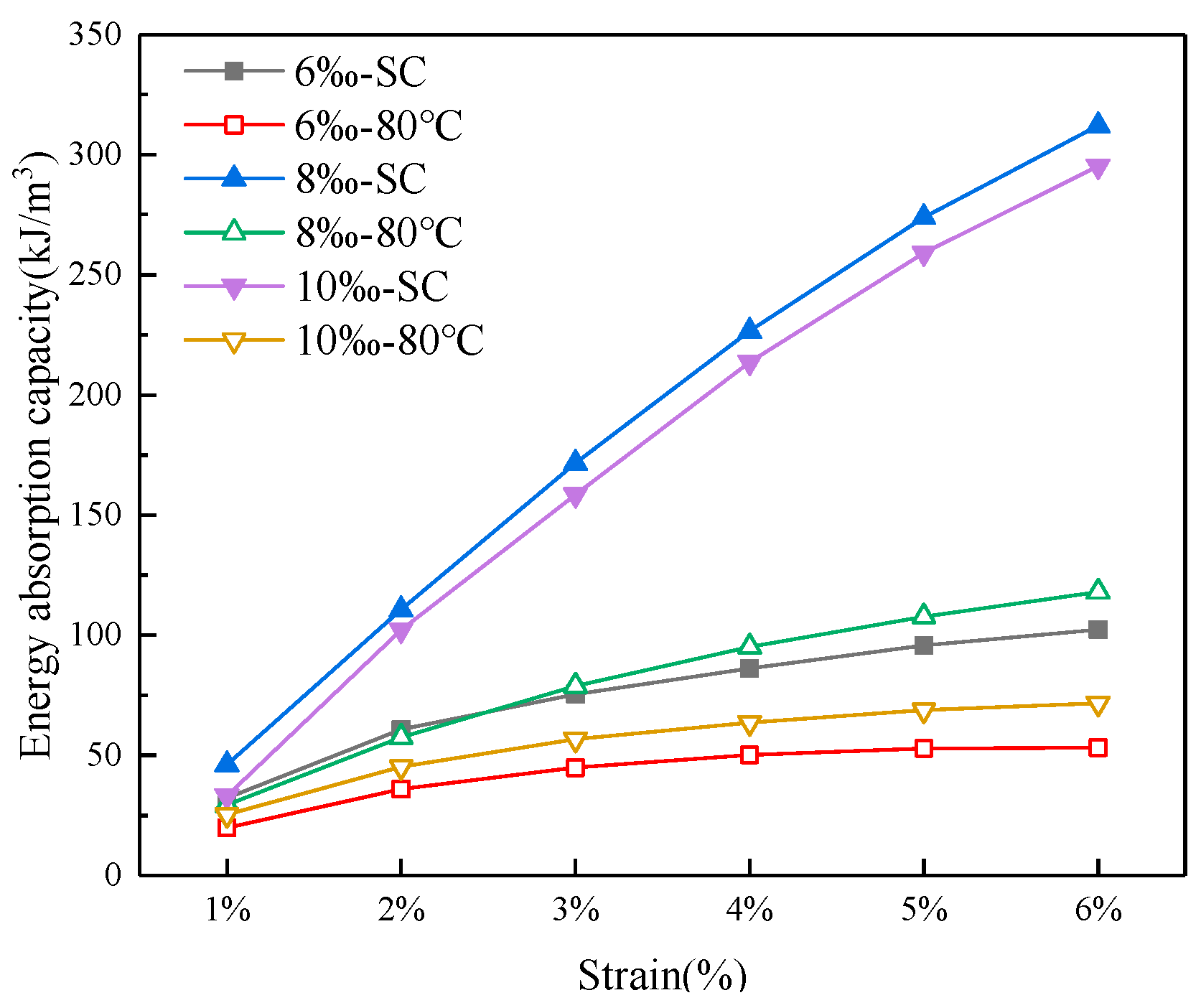

| Properties | Values | Properties | Values |
|---|---|---|---|
| Density (g/cm3) | 1.58 | Internal friction angle (°) | 27.4 |
| Cohesive strength (kPa) | 0 | Maximum dry density (g/cm3) | 1.61 |
| Optimum moisture content (%) | 12.5 | Maximum void ratio | 0.92 |
| Specific gravity | 2.70 | Minimum void ratio | 0.59 |
| Chemical Constituent | Values (%) | Chemical Constituent | Values (%) |
|---|---|---|---|
| CaO | 61.8 | SO3 | 3.3 |
| SiO2 | 22.1 | MgO | 2.7 |
| Al2O3 | 4.7 | LOI | 1.6 |
| Fe2O3 | 3.8 | — | — |
| Behavior Parameters | Values | Behavior Parameters | Values |
|---|---|---|---|
| Breaking tensile strength (MPa) | 486 | Dispersibility | Excellent |
| Length (mm) | 6 | Elongation at fracture (%) | 15~18 |
| Average diameter (µm) | 48 | Modulus of elasticity (MPa) | >4800 |
| Acid and alkali resistance | Excellent | melting point (°C) | 580 |
| Parameter | Estimated Value | Standard Error | 95% Confidence Interval | |
|---|---|---|---|---|
| Upper Limit | Lower Limit | |||
| k0 | 50.951 | 11.157 | 27.511 | 74.391 |
| k1 | −0.139 | 0.400 | −0.978 | 0.701 |
| k2 | 4.132 | 1.137 | 1.744 | 6.520 |
| k3 | −0.002 | 0.004 | −0.009 | 0.005 |
| k4 | −0.123 | 0.086 | −0.305 | 0.058 |
| k5 | −0.020 | 0.014 | −0.049 | 0.009 |
Disclaimer/Publisher’s Note: The statements, opinions and data contained in all publications are solely those of the individual author(s) and contributor(s) and not of MDPI and/or the editor(s). MDPI and/or the editor(s) disclaim responsibility for any injury to people or property resulting from any ideas, methods, instructions or products referred to in the content. |
© 2023 by the authors. Licensee MDPI, Basel, Switzerland. This article is an open access article distributed under the terms and conditions of the Creative Commons Attribution (CC BY) license (https://creativecommons.org/licenses/by/4.0/).
Share and Cite
Ruan, B.; Zhou, T.; Yuan, Z.; Singh, J.; Teng, J.; Zheng, S.; Zhang, J. Effects of Curing Conditions on Splitting Tensile Behavior and Microstructure of Cemented Aeolian Sand Reinforced with Polypropylene Fiber. Materials 2023, 16, 6347. https://doi.org/10.3390/ma16196347
Ruan B, Zhou T, Yuan Z, Singh J, Teng J, Zheng S, Zhang J. Effects of Curing Conditions on Splitting Tensile Behavior and Microstructure of Cemented Aeolian Sand Reinforced with Polypropylene Fiber. Materials. 2023; 16(19):6347. https://doi.org/10.3390/ma16196347
Chicago/Turabian StyleRuan, Bo, Tianyao Zhou, Zhongzheng Yuan, Jenisha Singh, Jidong Teng, Shilong Zheng, and Jiasen Zhang. 2023. "Effects of Curing Conditions on Splitting Tensile Behavior and Microstructure of Cemented Aeolian Sand Reinforced with Polypropylene Fiber" Materials 16, no. 19: 6347. https://doi.org/10.3390/ma16196347
APA StyleRuan, B., Zhou, T., Yuan, Z., Singh, J., Teng, J., Zheng, S., & Zhang, J. (2023). Effects of Curing Conditions on Splitting Tensile Behavior and Microstructure of Cemented Aeolian Sand Reinforced with Polypropylene Fiber. Materials, 16(19), 6347. https://doi.org/10.3390/ma16196347






